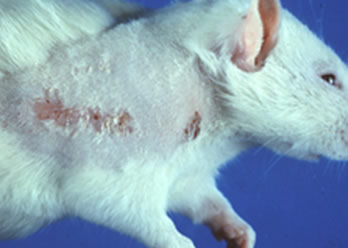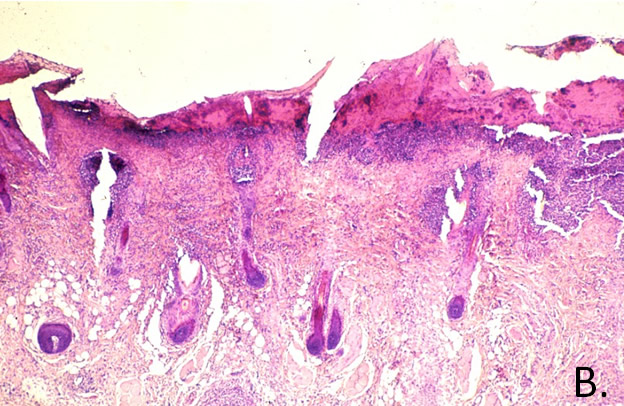
Etiology: Staphylococcus aureus and Staphylococcus xylosus are Gram-positive cocci which can be isolated from ulcerative dermatitis lesions.
Incidence: The incidence of ulcerative dermatitis varies from 1-2% to 20% depending on the rat population[2]. Colonization of the mucous membranes (S. aureus most commonly) and skin (S. xylosus most commonly) occurs.
Transmission: Inoculation of the bacteria apparently occurs when the skin is irritated from trauma (fighting, scratching, and excessive grooming). Transmission of S. aureus from humans to rats is speculated to occur.

Clinical signs: In immunocompetent rats, colonization with S. aureus is asymptomatic. In rats with compromised immune systems or with skin wounds, animals may have ulcerated to scabby skin lesions on the dorsal cervical or cranial regions (photo, above right).
Pathology: Characteristic lesions include multifocal to coalescing excoriative lesions of varying sizes with a serous to sanguinous discharge. Histologically, ulcerative dermatitis can be appreciated with adjacent epidermal hyperplasia and dermal infiltration with lymphocytes (B.).
Diagnosis: Diagnosis can be made by culture of suspicious lesions.
2. Percy, D.H., Barthold, Stephen W., Pathology Of Laboratory Rodents and Rabbits. 3 ed2007, 2121 State Avenue, Ames, Iowa 50014, USA: Blackwell Publishing Professional.